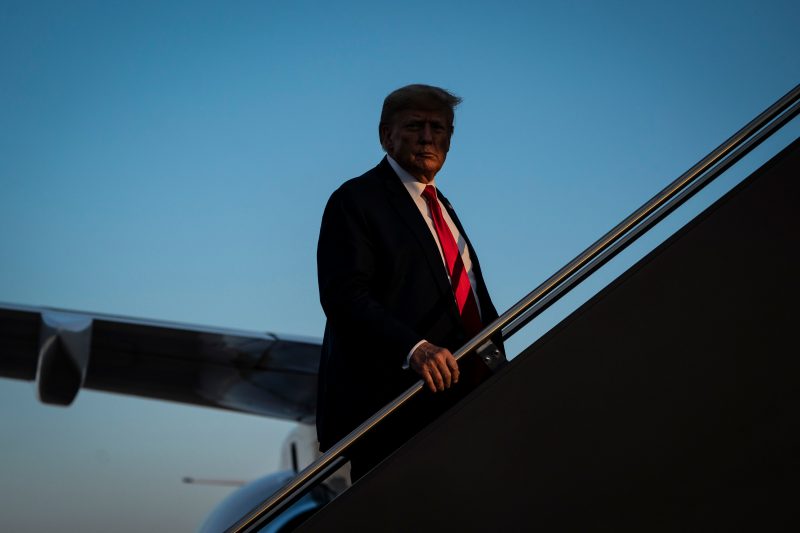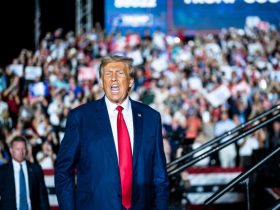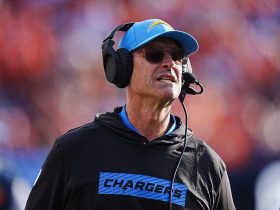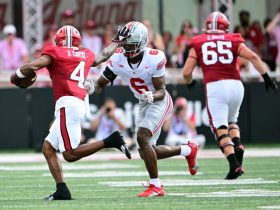Donald Trump admits he doesn’t really know what happened in that subway car in Manhattan earlier this month, but that certainly won’t stop him from picking sides.
“Well, I think he” — that is, Daniel Penny, who put Jordan Neely in a chokehold that led to Neely’s death — “was in great danger and the other people in the car were in great danger,” Trump told the Messenger. “I haven’t seen the tape. But I think he was in danger. And it sounded like the other people in the car were in danger.”
Neely was a Black homeless man who, on the afternoon of May 1, got on the F train in Manhattan. Police say that witnesses described Neely as acting “hostile and erratic.” It’s expected that this idea will be central to Penny’s defense against a charge of second-degree manslaughter filed last week.
But Trump’s information about the case appears to have come largely from right-wing media, presumably including Fox News.
“It also looks like this man” — Neely — “was arrested over 40 times and had lots of problems,” Trump added. That bit about the arrests has been mentioned more than a dozen times on Fox News over the past two weeks. It’s also been shown on-screen more than once.
“I won’t make a definitive [statement],” Trump told the Messenger, “but it looks to me like the people in that car were in great danger.”
That’s how it usually works for Trump, of course: Even with a limited awareness of the details, he folds the incident into two of his favorite political frames. First, that crime in big (Democratic) cities is out of control, leaving people to feel hopeless. Second, that extrajudicial responses to perceived threats are encouraged.
The incident with Daniel Penny in New York is not to be confused with that involving Daniel Perry, the man convicted by a Texas jury in April for the 2020 killing of a Black Lives Matter protester. Perry’s conviction triggered a near immediate pledge from Texas Gov. Greg Abbott (R) that he would consider granting Perry a pardon, suggesting that Perry was acting in self-defense. The emergence of messages in which Perry espoused racist and anti-protester views appears not to have derailed Abbott’s intention.
Nor did it deter Trump from rising to Perry’s defense only hours after those messages were made public.
“We will pass legislation protecting the absolute right to self-defense with federal penalties for prosecutorial abuse like we saw just recently in Texas, you saw that,” Trump said at an NRA event in Indianapolis, “where a man was trying to defend himself and they want to put him in jail for the rest of his life.”
Both of these situations evoke Trump’s response to the 2020 shooting of two people in Kenosha, Wis., by Kyle Rittenhouse, a teenager who traveled to the city after rioting and vandalism erupted following Black Lives Matter protests.
Rittenhouse “was trying to get away from” the people he shot, Trump said in an interview at the time. “I guess it looks like he fell and then they very violently attacked him. … I guess he was in very big trouble.” Rittenhouse was, in fact, later cleared on homicide and other charges after arguing he acted in self-defense.
Over and over, this is the pattern: Trump endorsing law enforcement and politically allied private actors to take matters into their own hands or offering support for them after they have done so. When he “joked” about cops intentionally injuring people they were arresting in front of an audience of amused police officers in 2018. When he encouraged people at his 2016 presidential campaign rallies to accost or assault protesters in the audience, pledging to pay legal fees for anyone arrested for doing so. When he mused about having police or the military shoot immigrants or Black Lives Matter protesters.
And when, more recently, he pledged to quickly pardon those who’d participated in the attack on the U.S. Capitol on Jan. 6, 2021. He’s embraced the argument offered by then-Fox News host Tucker Carlson, Rep. Marjorie Taylor Greene (R-Ga.) and others that those who faced incarceration were somehow political prisoners instead of admitting that most either had already been convicted of crimes or had allegedly engaged in violence against police officers — the sort of thing that would seem to be at odds with Trump’s ostentatious insistence on supporting law enforcement.
Trump’s defense of Rittenhouse in 2020 (at a time when he was seeking reelection by elevating concerns about crime, including by leveraging the Black Lives Matter protests) contrasted dramatically with his view of the killing of Aaron Danielson by Michael Reinoehl. Reinoehl also claimed to be acting in self-defense — but he was a self-described supporter of antifa. So when U.S. marshals shot and killed Reinoehl (reportedly without announcing themselves or his being armed), Trump was supportive.
“That’s the way it has to be,” Trump said of the failure to bring Reinoehl to trial. “There has to be retribution when you have crime like this.”
Reinoehl killed a Trump supporter, so Trump ignored his “self-defense” claims. What’s more, Reinoehl’s own death in Washington was precisely the response Trump hoped to see: a leftist paying the ultimate price without bothering the legal system at all. While both Danielson and Reinoehl were White, race and politics intertwine in other examples noted above (almost certainly including perceptions of the danger Neely presented) in a way that suggests where Trump’s allegiances will land.
That actors on the right such as Greene quickly declare their allegiance to Penny, the man who killed Neely, is unsurprising. He’s doing what so many on the right imagine themselves doing: confronting a dangerous criminal (even if that last detail is discovered only later) and being too strong in doing so. Rugged individualism, manifested in single-person, well-regulated militias that act as their own law enforcement agencies.
But Trump is in a different position. He is seeking reelection to the presidency and running, in part, on amplifying this approach to perceived danger.
In 2016, his embrace of violence against his perceived opponents was limited or mostly theoretical. Now, it’s demonstrated.








